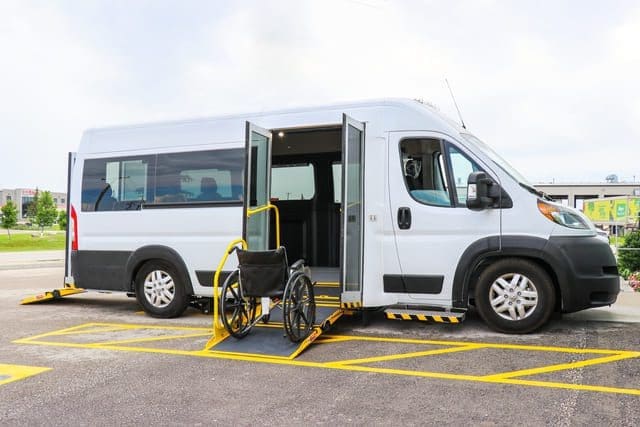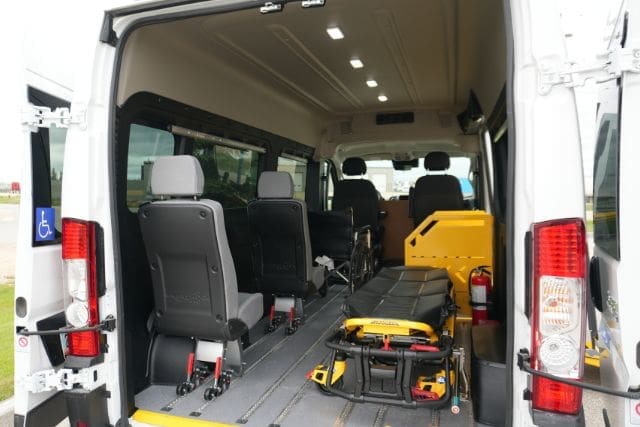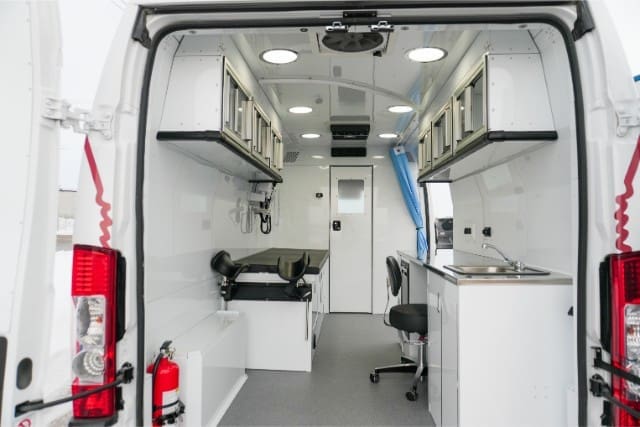So you’re thinking of getting a powered ramp for your wheelchair van.
Maybe your organization transports a lot of walker users and you want the flattest ramp you can find for easy walk-on, walk-off access. Or, maybe you provide an accessible public transportation service and you need a ramp that is quick and easy to deploy.
For whatever reason you’re here, choosing the right mode of getting inside a wheelchair van is vital to the efficiency of your transportation, the comfort of your passengers, and the overall success of your organization.
If you choose the wrong kind of ramp, your passengers could struggle to get on and off the van–adding an extra barrier to those who already experience barriers in their everyday lives.
Being informed on the ins and outs of powered ramps is essential to making the right choice for your organization. And that’s where we come in.
At MoveMobility, we’ve built nearly 100 conversions with powered ramps in the last year. So, we have a deep understanding of their strengths and weaknesses.
In this article, you’ll learn how powered ramps work, what their pros and cons are, and who they’re right for.
Powered ramps for wheelchair vans: what are they?
A powered ramp is a device that unfolds from inside a van and allows people with any mobility level to enter and exit the van.
What makes a powered ramp different from a manual ramp is that it’s powered by an electronic, chain driven mechanism. This means that with the push of a button, the ramp will fold and unfold on its own.
Check out this video from our YouTube channel to see how powered ramps work:
The P4 | P Series Wheelchair Accessible Vans | MoveMobility
Powered ramps for wheelchair vans: what are the pros?
Powered ramps require little effort from the driver to deploy the ramp
A powered ramp is a great option for organizations who want to deploy their ramp with the simple push of a button. There is no need for the driver to physically pull out the ramp–meaning your drivers will experience less physical strain.
So, if you know you’ll be frequently deploying the ramp, a powered ramp may be the best option for you.
Clients with a powered wheelchair can enter and exit the vehicle on their own
One of the most important pros of a powered ramp is that a client with a powered/motorized/electric wheelchair can enter and exit the van independently. This may provide a sense of freedom to your clients, which is so important.
Easy to use for clients who use a walker or cane because there are no steps
A powered ramp is referred to in the mobility equipment industry as “barrier free”. This is because there are no steps whatsoever when you use a powered ramp, making it the perfect option for clients with a walker or cane.
Now that you know the pros of a powered ramp, you should also know the cons.
Powered ramps for wheelchair vans: what are the cons?
Manual wheelchairs have to be pushed up the ramp
Pushing a large or heavy wheelchair up a ramp may, in some cases, cause physical strain on the driver.
That being said, powered ramps have been specifically made to be longer and, naturally, flatter–specifically, only an 11 degree angle.
Powered ramps for wheelchair vans: who are they right for?
- Organizations based in urban settings like cities
- Elderly care homes or other organizations with many walker users
- Adult daycares or other organizations who transport many passengers
- Organizations providing accessible public transportation, such as HandiTransit
MoveMobility wheelchair vans with powered ramps (P-Series)
All of our P-Series vans can be built with a powered ramp conversion (view them on our website here). They are the only vans we offer with a powered ramp option.
Our most popular vans with a powered ramp option are the P4, the P3, and the P6.
The P4
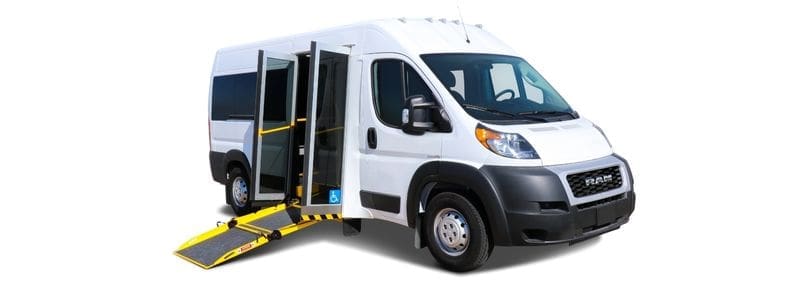
The P4 conversion is a popular option for accessible transportation providers downsizing from a bus to a more efficient, flexible option.
It can have up to 10 ambulatory passengers, 3 wheelchairs, or a combination of both. It’s also available with side entry or rear entry ramp access. Learn more about the P4 from MoveMobility here.
The P3

The P3 conversion is only slightly larger than a minivan, but it provides more flexibility and customizable floor plans.
It can have up to 8 ambulatory passengers, 3 wheelchairs, or a combination of both. Learn more about the P3 from MoveMobility here.
The P6
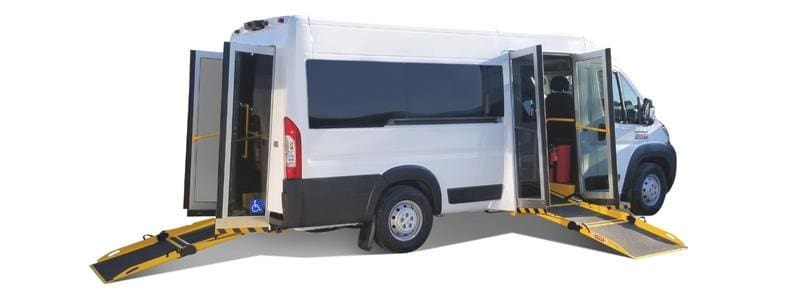
Just like the P4, the P6 is a popular option for accessible transportation providers downsizing from a large cut-away bus to a more efficient, flexible vehicle option.
The P6 is configured with dual access ramps. This means it can have side entry and rear entry access for walk-on and mobility passengers. The P6 can have up to 10 ambulatory passengers, 3 wheelchairs, or a combination of both.
Your next steps to getting a powered ramp for your wheelchair van
You came to this article to learn everything you need to know about powered ramps.
Now, you know how they work, their pros and cons, and who they’re generally right for.
If you still aren’t sure if a powered ramp is right for you, talk to a MoveMobility expert now.
Or, check out these related articles for more information:


